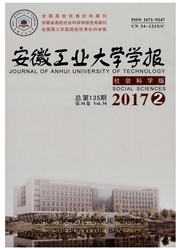

 中文摘要:
中文摘要:
目的:探讨磁共振信号强度比值在足月新生儿胆红素脑病诊断中的价值。方法:对53例患儿依据血清胆红素水平及临床症状分组,测量患儿苍白球、额叶白质磁共振图像信号强度的比值,然后进行统计分析。结果:T1WI-SIR与总胆红素水平及临床症状严重程度呈正相关,T1WI-SIR值在临床症状分组组间均存在差异,在胆红素增高中度组与重度组之间没有统计学差异。结论:胆红素水平不能全面地评价胆红素脑损伤,使用磁共振信号强度比值并与临床表现相结合,可望对胆红素脑病做出较客观准确的诊断。
 英文摘要:
英文摘要:
Objective: To investigate the value of signal intensity ratios with MRI in the diagnosis of hyperbilirubinemia of the neonates. Methods: 53 cases were divided into different groups according to the serum bilirubin level and clinical data. All these patients were analyzed with signal intensity ratio of MRI. Results: correlation test showed T1-SIR were positively correlated with bilirubin levels and severity of clinical symptoms. Comparison pairs differed significantly between each other in clinical groups. There was no statistical difference between moderate and severe group with serum bilirubin.Conclusion: Brain injury can not be comprehensively evaluated by bilirubin. While signal intensity ratio with MRI combined with clinical manifestations is expected to make more objective and accurate diagnosis to bilirubin encephalopathy.
 同期刊论文项目
同期刊论文项目
 同项目期刊论文
同项目期刊论文
 期刊信息
期刊信息
